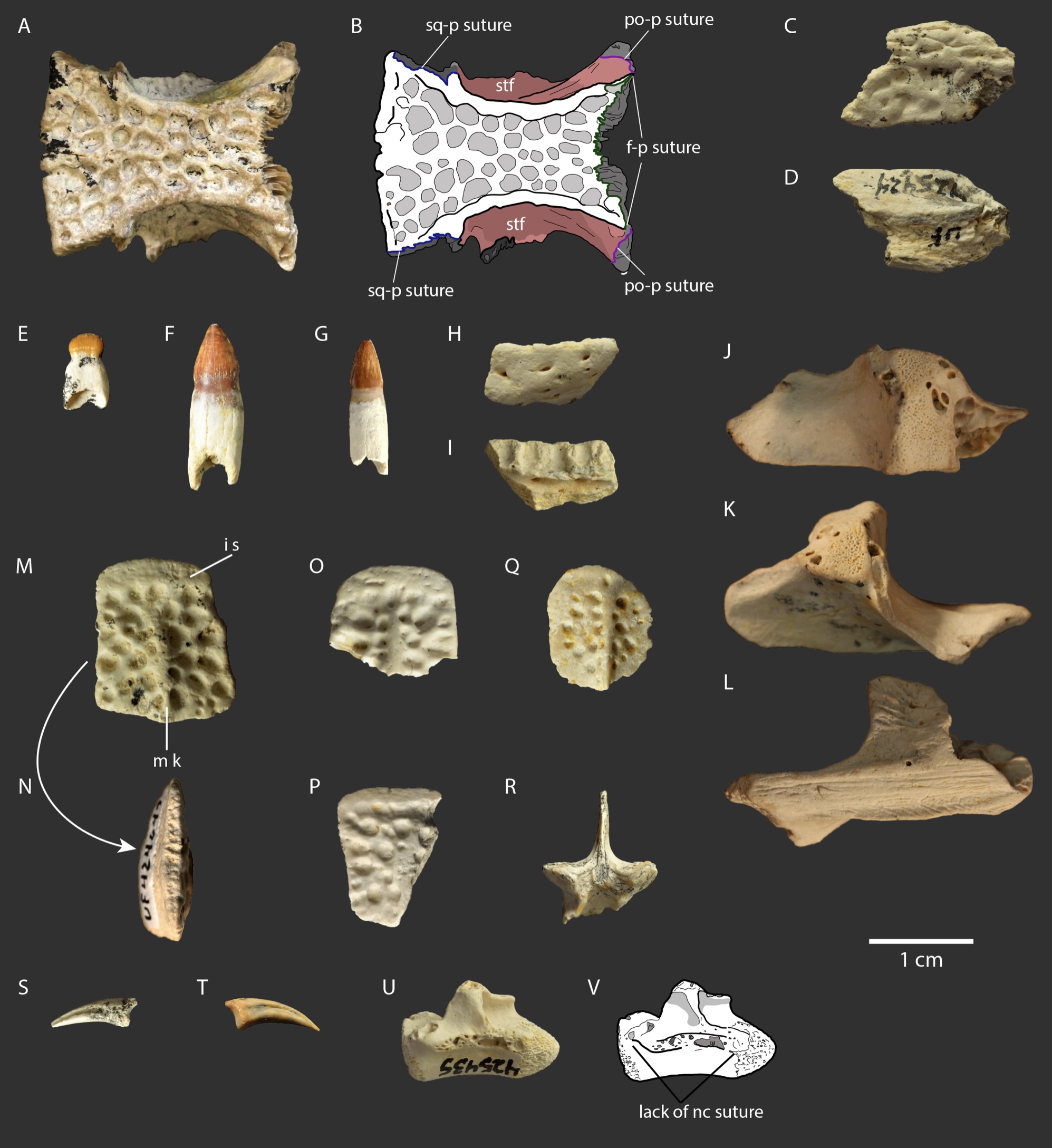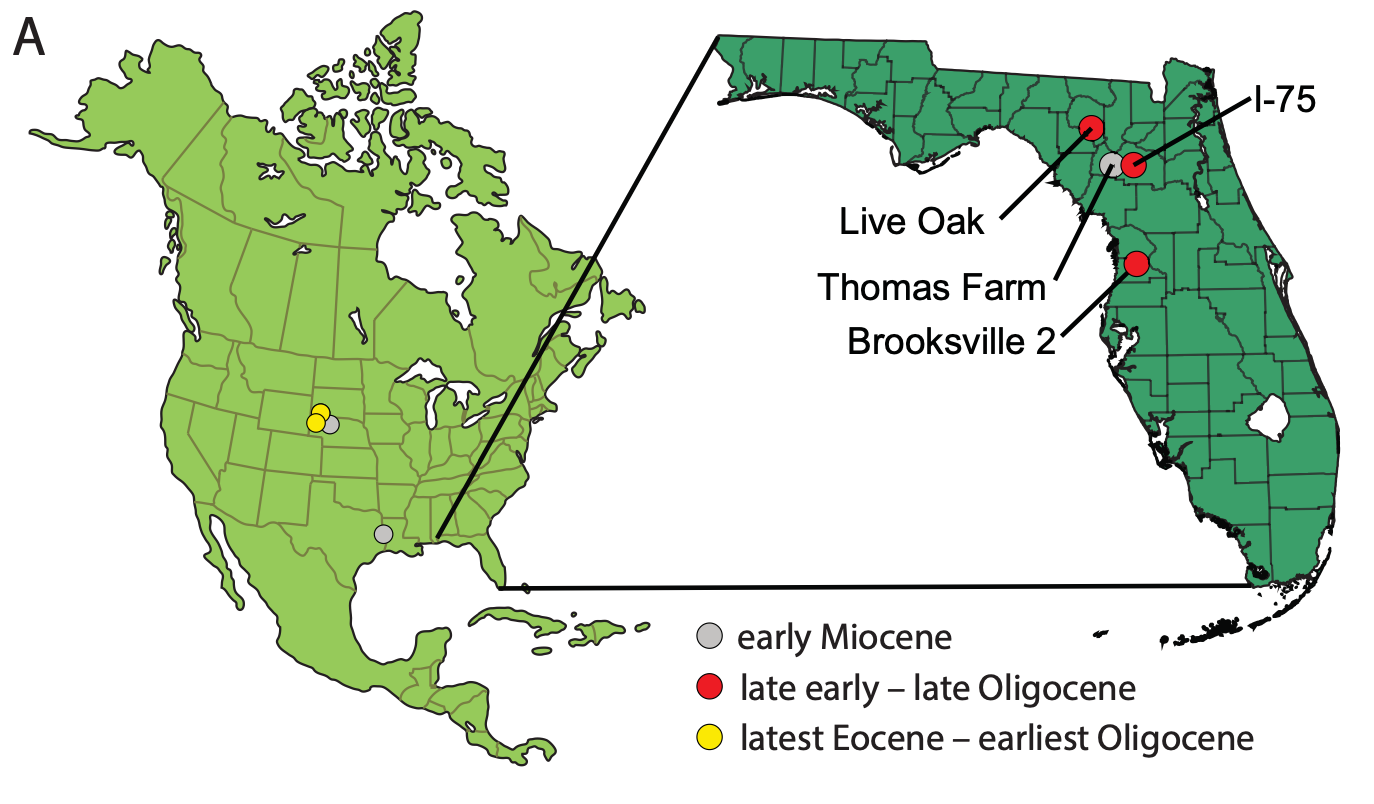
How do you tell the difference between an alligator and a crocodile?
One you’ll see later, and the other you’ll see in a while...
Jokes aside, the venerable American alligator, often just referred to as gator, is a staple of wetland ecosystems in the southeastern United States and plays an important role as apex predators and ecosystem engineers. The gator is an icon of Florida, and is the state reptile of Louisiana, Mississippi, and of course, Florida. Large-bodied ancient alligator species have been present in the region for at least 18 million years, however newly studied alligator fossils from Florida represent the oldest record of the genus Alligator in the SE USA. The fossils, included as part of a recent publication in Palaeontologia Electronica, push back alligators’ known history in the region by 8-10 million years. The magnificent and formidable American Alligator (Alligator mississippiensis). From Clément Bardot - Own work, CC BY-SA 4.0, commons.wikimedia.org/w/index.php?curid=49481566
The magnificent and formidable American Alligator (Alligator mississippiensis). From Clément Bardot - Own work, CC BY-SA 4.0, commons.wikimedia.org/w/index.php?curid=49481566
The study, led by Dr. Alex Hastings, Fitzpatrick Chair of Paleontology at the Science Museum of Minnesota, examined fossil material from a site near Brooksville, Florida. The site was once a series of deep fissures that filled in with sediment (and fossils!) around 28 to 26 million years ago. The site is fantastically diverse with toads, turtles, lizards, bats and tiny ancient horses all making an appearance. The gator fossils – which include pieces of cranium, teeth and osteoderms – had actually been collected from the site in the 1990s, but had sat unidentified and undescribed until Hastings and colleagues recently studied the material.
 Alligator fossils from the ~26-28 million year old Brooksville site in Florida, studied by Hastings and colleagues. The fossils include pieces of skull and jaw (such as parietal and dentary), teeth, vertebrae, and osteoderms (kinds of bony plates based in/near the skin).
Alligator fossils from the ~26-28 million year old Brooksville site in Florida, studied by Hastings and colleagues. The fossils include pieces of skull and jaw (such as parietal and dentary), teeth, vertebrae, and osteoderms (kinds of bony plates based in/near the skin).
Coming across these fossils was a big deal and they have provided important new insights into the natural history of alligators. Hastings describes the importance of these fossils: “To me the significance lies in both the antiquity of Alligator in Florida, going back to some of the earliest land for the state, and that it was apparently still quite small at that point in time”.
You might be surprised to know that gators haven’t always just been in the southeastern US. In fact, the oldest Alligator fossils are from the Great Plains of South Dakota and Nebraska around 36 million years ago. These earliest alligators, were, similar to the newly studied specimens, relatively small. Gators in the SE US therefore weren’t always the giant apex beasts we know of today; these early gators were around a third of the size of modern gators! “At less than 4 ft long at what we think was an adult (not conclusive) these lil' gators would have been Instagram famous, if given the chance” describes Hastings of the cuteness of these ancient alligators. But gators are still gators and “they probably could have still chomped with some strong jaws though, so still not very cuddly, but adorable all the same”.
 Map of the sites in Florida where the newly studied gator fossils were found (red circles). The oldest gator fossils are shown in yellow in the Great Plains. Also shown in grey are where younger Alligator fossils have been found.
Map of the sites in Florida where the newly studied gator fossils were found (red circles). The oldest gator fossils are shown in yellow in the Great Plains. Also shown in grey are where younger Alligator fossils have been found.
This raises the question of how these ‘lil gators’ got to Florida and gave rise to modern alligators in the first place. While there are several possibilities, current knowledge suggests that the genus Alligator originated in the Great Plains and spread southeastward through Texas and then along the Gulf Coastal Plain to Florida. Shortly after Alligator appears in the fossil record of the Great Plains, there was a massive drop in average temperature in the region. It is possible that these small Great Plains gators then migrated south looking for warmth. Hastings agrees that “dropping temperature in the Great Plains would certainly have encouraged that response”.
This new description and study of these fossils has yielded a myriad of important new insights into the evolutionary and biogeographic history of the alligators. They may prove to be even more important still. Particularly for Hastings, who is interested in understanding how long, on geologic timescales, it takes a group like alligators to reach larger body sizes, “these fossils could prove to be an important part of figuring that out.”
This study is titled ‘Oldest record of Alligator in southeastern North America’ and was authored by Alexander K. Hastings (Science Museum of Minnesota), Blaine W. Schubert (East Tennessee State University), Jason R. Bourque (Florida Museum of Natural History), and Richard C. Hulbert Jr. (Florida Museum of Natural History).
To discover more about this research, you can read the full publication here.

